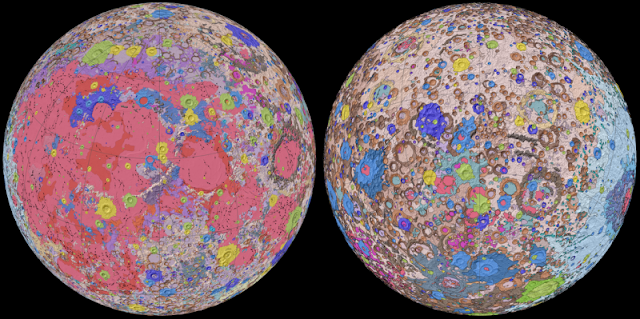 |
| Expand to view cross-eyed |
 Mercury isn't a comet but it has a tail, a faint one of sodium vapour. From AstroBob: Day-side temperatures run to 450C and night-side to -170C. Heat strips heavy atoms. Sodium scatters sunlight well so it is a good target. Solar wind pushes the atoms away to form a faint tail. Italian amateur astronomer, Alessandrini, took the photo. (There's an SF story about Mercury in which the perpetually turned away side was named "June" because "What is so rare as a day in June".)
Mercury isn't a comet but it has a tail, a faint one of sodium vapour. From AstroBob: Day-side temperatures run to 450C and night-side to -170C. Heat strips heavy atoms. Sodium scatters sunlight well so it is a good target. Solar wind pushes the atoms away to form a faint tail. Italian amateur astronomer, Alessandrini, took the photo. (There's an SF story about Mercury in which the perpetually turned away side was named "June" because "What is so rare as a day in June".)A detailed colour-coded geologic map of the entire moon has been published. There is zoom-in detail available on line. See expanded article at EarthSky.org

How much room does the Universe have to record information about itself? This overlaps the question, can the universe be self-aware? This PBS ten-minute Space Time talk eyeballs it. (Black holes feature prominently). Information capacity is proportional to surface area, not volume. The smallest unit imagined that may be used for a mark is a Planck unit. This leads to an eyeball number of 10180 Planck units in the universe and some eyeball calculations that match a Planck unit to each element in the visible universe. The conclusion, a great deal of self-reporting is possible. This is an interesting question. The mass of our ideation is tiny and an improbable event, the child of a child of an improbable vortex of probability, yet somehow consequential. As one author wrote, we weren't predicted but the universe expected something like us would be along.

No comments:
Post a Comment